March 12, 2014
Annex on bhaga 'divine' in bhagavato okkanti inscription on Bharhut pillar
BAGA, an Old Iranian term for “god,” sometimes designating a specific god.
Baga- is attested in early and late Iranian with two meanings (1) agent noun “distributor,” glossed by Parsi Sanskrit vibhaktar- and (2) noun of action and result “portion.” Beside the noun, the verb bag- “give or receive portions” is in frequent use: bag-, present baj- and baxš-, participle baxta-, and nominal derivative bāga-. The cognate words are cited in full in Dictionary of Khotan Saka, p. 300: Avestanbaž-, baxta-, bāga-; Sogdian βaxš-, βxt-, βγn-; Zoroastrian Pahlavi baxš-, baxt; Khotan Saka būṣṣ-, būta-; Old Indian (Sanskrit) bhájatiṃbhaktá-, bhága-, bhāgá, traced in Indo-European in J. Pokorny, Indogermanisches etymologisches Wörterbuch, Bern and Munich, 1959, p. 107 s.v. bhag-.
The agent noun baga- “distributor” was adopted as a name for “god” and “gods.” In Old Persian baga- occurs beside maθišta bagānām “greatest of gods” for Ahuramazdā. It renders the Akkadian Semitic ilu “god.”
In the Avesta the word yazata- “worshipful” was preferred, the later Zor. Pahl. yazdand Ossetic izäd, in Greek script isdi- in the name Isdigerdēs, Yazdkirt, Armenian Yazkert. The other word of divinity, dai- “shine,” is retained once in the Avestan word dyaoš “from the sky” (genitive from dyau-) and in daiva- of the Avestan phrase daēvāiš-ca mašyāiš-ca “with gods and men.” Normally this word for the ancient gods was developed to “devils” in the Zoroastrian tradition. The North Iranian Khotan Saka also had developed dyūva- “devil” from daiva. A trace of the older “god” can be seen in the name Dēv-dād “created by god.” Xerxes in a Persepolis inscription reported daivadānam viyakanam “I destroyed the house of devils” (XPh 37).
In the later Zoroastrian books Pahlavi and Pazand baga- became baγ (bkˈ, bγˈ, Pāzand baγ) and occurs associated with yazata- in the phrase yazdān baγān “gods” (bkʾn, bγʾn). A lost nask “book” of the Avesta (a word preserved in its earlier non-technical sense in Caucasian Georgian naskʾ-v-i “knot,” verbal naskʾ-va) was calledBaγ (bkˈ) and Baγān. The Avestan baγō.baxta- can be rendered either “bestowed as a portion” or “distributed by the gods,” the second meaning can be supported by the compound (Dēnkard, ed. Madan, p. 603.6) baγ-tāšīt “created by gods.” The Aramaic ALḤA “god” was interpreted by baγ; it is used in the Ḥājjīābād inscription and in the inscription of Šāpūr I, Parthian line 1 mzdyzn ALḤA, *mazdēẓn baγ, Greek masdaasnēs theos. The king Ḵosrow I is called im baγ “his present Majesty” (Dēnkard, p. 413.9). Šāpūr son of Ohrmazd is quoted in Škand-gumānīk Vičār (ed. P. J. de Menasce, Fribourg, 1945, pp. 118-19, 10.70) ōi baγ šāhpūr ī šāhą šāh i hōrməzdq “the god Šāpūr king of kings son of Ohrmazd.” The baγ yazdkart is cited in Dēnkard, p. 949, 21. The word baγa- gave Sogdian βγ (in Arabic script this β- was expressed by the letter f with three dots on it, which in normal Arabic could be replaced by f). The Buddhist Sogdian employed βγ- of the Buddha P 2.1137-45 βγʾn βγtm pwty “the most godlike of gods Buddha.” The Khotan Saka had preferredgyastānu gyastä “god of gods” from yazata-. Sogdian had the plural βγʾyšt, *βaγišt, gen. plural βγʾn, *βaγān, and βγʾstʾn, *βaγastān for “paradise.”
The Kušan bagapouro (from baga-puθra-) is represented in Turfan Parthianbγpwhr and New Persian faγfūr, and found in Armenian čen-bakour, the Chinese imperial title ṭʿien-tsï “son of heaven,” to which the Old Indian word was deva-putra-. Manichean and Christian texts use this same word for “son of god.”
Turfan Parthian had bg, *baγ with plural baγān and adjective baγānīγ. Turfan Persian had developed -y- from -γ- in by, *bay, plural baʾān (bʾʾn) and adjectivebayānīγ. This bai is found in New Persian bē-doxt, bē-loft from *baga-duxtā“daughter of god” for the planet Venus. About A.D. 800 Iranian baγ is present in Kirkut (Qiṛγiz) bai, written by the Chinese sign buâi (Mathews, Chinese-English Dictionary, no. 4991, modern pei) cited in JA, 1950, p. 298. The Kirkut adopted the Turkish language only in the 7th-8th centuries.
Khotan Saka has beʾga-, baʾga-, and be- in the title beʾgarakä, baʾgarakä, andberakä for Turkish bägräk. From Turkish, in proper names Ossetic has bī “prince,” as in Baras-bī “tiger, prince.”
Turkish took the title bäg, beg, and later bey; in early Turkish in Brāhmī script it was bhek, and in Byzantine Greek the Khazar title was written mékh. The formbägräk occurs in a Turfan Manichean source. In Arabic script the Turkish title wasbag, baḵ, and bāk.
The sacred fire called farn-baγ “the distributor (god) of farn” (farn was equated with Aramaic GDHǰ “fortune”) was located at Kārīān in Fārs. The Pāzand read the name as farō-bag and in Armenian it probably gave hour-bak.
In Kushan inscriptions this baga- is vaka- and vvaga-in the name Vaka-mihira and Vvaga-mihira “the god Miθra.” The v- and vv- are an attempt to express the fricative β. The Kushan bakana-pati- “temple official” is βγn-pt in Sogdian. Armenian has bagin (q.v.) “shrine, altar” from Parthian.
Choresmian from Toprak-kala has βγy for the sixteenth day of the month corresponding to mtr “Miθra,” as Bīrūnī gave fyγ, *βaγ, from βaγi for the same day.
The word baga- occurs in many proper names in ancient Persia. In Greek these names are written with Baga- and Mega-. The name bg-srw, *baga-srava- occurs in an Aramaic papyrus from Egypt.
Two toponyms contain the word baga- in Persia, others are in Armenia. The rock of Behistūn, Bīsotūn is on tò Bagístanon óros. The Bundahišn cites Baγ-dāt ī baγān-dāt “Baghdad which is created by the god(s)” (TD2, p. 205.12).
In the sense of “portion” Gathic Avestan has baga-, beside later baγa- and baγā-, which is glossed by Zor. Pahl. baγ, bažišn, and baxtārīh.
The derivative baxta- “distributed, allotted” also is frequent later. The Avestan phrase in Vištāsp yašt 38, baxta-ca nivaxta-ca, is explained to mean pat nēvakīh ut frazandān “possessed of good things and children” where “possessed” is Pahlavibaxtadār (baxtiyār). The baxt “fortune” takes the form of a varrak ī vazurg “great ram” mounted behind Artaxšaθr (Ardašīr) in his flight from Artapān (Ardavān).
The noun derivative bāga- is also important in connection with baga-. A later form is attested in Khotan Saka haṃbāya- (sing. haṃbā, plural haṃbāya) “portion” corresponding to Turfan Parthian ʾmbʾg, *ambāγ, Turfan Persian hmbʾw, *hambāv, “rival,” Zor. Pahl. hambāγ, Pāzand hambāi, hambāe “companion.” Through connection with “possessions” the Iranian bāy gave Turkish bai “rich,” whence Mongol bayan “rich.” In Ossetic the Turkish bai- occurs in the personal family name Bai-tuγantä “rich” and “bird of prey.” As a “portion of land” New Persian has bāγ “garden” and Pāzand has bāγastą i vahəšt “garden of Paradise,” that is Garō’amān, and vahišt is in Zor. Pahlavi bō’astān “garden as place of perfumes.” From Alanian (that is older Ossetic) Caucasian Čečen has (with many other words of Alanian origin) the word bai “meadow, lawn,” plural beš, with Ingušbai, plural bäš (the plural suffix is -aš and -s-).
This bāy “rich” is also found in the Finno-Ugrian Ostyak way.
(H. W. Bailey)
ii. In Old and Middle Iranian The old IE. term for the heavenly gods, the cognate of OInd. devá-, Lat. deus, etc., was generally devalued in Iranian to “false or evil god” and ultimately “demon” (Av.daēva-, Old Pers. daiva-, Mid. Pers. dēw, etc.). In the sense “god,” this word was replaced either by yazata- “(a being) worthy of worship” (Av. yazata-, Mid. Pers.yaz(a)d, NPers. īzad, etc.) or by baga-.
It is not likely that OIr. baga- derives from a word meaning “god” in IE., despite the occurrence of bogŭ “god” in the Slavonic languages (probably as a result of Iranian influence). Etymologically, baga- “god” belongs to the verbal root bag “to distribute, allot” and may be equated with OInd. bhága-, a divine epithet probably meaning “dispenser; generous one,” beside which there exists also a second nounbhága- “distribution, allotted portion” equivalent to Av. baγa- “portion, lot,” Slavonic *bogŭ in derivatives such as ubogŭ “poor” (from “*portionless”). It is this latter word which is personified in the Rigveda as the minor deity Bhaga (one of the Ādityas, a group headed by Varuṇa and Mitra). (See P. Thieme in B. Schlerath, ed.,Zarathustra, Darmstadt, 1970, p. 401.)
Av. baga- occurs only once in the Gāθās, in a much-debated passage (Y. 32.8) where it possibly means “portion” or “distribution.” In the later Avestan texts baγa- occurs occasionally as a title of divinities (Ahura Mazdā, Māh, Mithra), but it is debatable whether it should still be understood in the earlier sense of “dispenser” (cf. OInd. bhága-) or already as “god.” The development of the latter meaning is securely attested in Old Persian, where baga-, translated by words meaning “god” in Babylonian and Elamite, is the only generic term for the divinities worshipped by the Achaemenids.
There is no certain trace of baga- in the Mid. Ir. Saka dialects, where forms derived from yazata- (Khot. gyasta-, Tumshuqese jezda-) are used instead, while Islamic Choresmian has adopted Ar. ʾllh for “God” (but cf. Chor. (‘)βγ(y)k “doll” from *baga-ka-). All other attested Mid. Ir. languages retain forms derived from baga- in the sense “god”: Mid. Pers. bay (plur. bayān, baʾān), Parth. baγ, Bactr. bago, Sogd.βγ-. All these forms are used as honorific titles, not only of gods but also of kings and other men of high rank, in which case the translation “lord” is usually appropriate, e.g., Bactr. i bago šao Kanēški “the lord king Kanishka.” In Zoroastrian Pahl. im bay “this lord” and ōy bay “that lord” mean “His (present) Majesty” and “His late Majesty” respectively. A peculiar use of the plur. form to refer to the monarch is found in the Sasanian inscriptions (and perhaps in the Sogd. “Ancient letters,” see W. B. Henning, “Soghdisch βγʾʾn-,” ZDMG 90, 1936, pp. 197-99), e.g., Inscr. Parth. LKM ʾLḤYN (išmāh baγān) “Your Majesty.” A derivation of the Turk. lordly title bäg, later bey, from Iranian is superficially attractive but quite uncertain (see G. Doerfer, Türkische und mongolische Elemente im NeupersischenII, Wiesbaden, 1965, pp. 402-06).
It is probable that baga- “god” sometimes designates a specific deity as “the god”parexcellence. Various attempts have been made to identify “the god” so referred to, as Ahura Mazdā, as Mithra, or as an Iranian equivalent of the Vedic Varuṇa (see M. Boyce, “Varuna the Baga,” further identifying Varuṇa with the Av. Apąm Napāt [q.v.]), but no basis has ever been stated for the assumption that baga- “the god” in a personal name such as *Baga-dāta- “given by (the) god” must refer to the same divinity at all periods and in all parts of the Iranian world. However, strong evidence that Baga was sometimes used as a by-name of Mithra is provided by calendrical data first exploited by J. Marquart (Markwart), Untersuchungen zur Geschichte von Eran I, Göttingen, 1896, pp. 63-65; II, Leipzig, 1905, pp. 129, 132-34 (see also V. A. Livshits, “The Khwarezmian Calendar and the Eras of Ancient Chorasmia,” Acta Antiqua Academiae Scientiarum Hungaricae 16, 1968, pp. 444-46, for Chor. data). Thus, the seventh month of the year is named after Mithra in Mid. Pers. Mihr māh, Arm. Mehekan, early Chor. mtr, but after Baga in Old Pers. *Bāgayādiya (attested in El. transcription) and Bāgayādi(š) (q.v.), Sogd. βγkʾn(c)(cf. the similar formations used to name the ninth month: Mid. Pers. Ādur māh, Arm. Mehekan, early Chor. ʾtrw, Old Pers. Āçiyādiya (q.v.) and *Āçiyādi(š)). Likewise, the sixteenth day of the month is known as Mihr rōz in Mid. Pers., mtr in early Chor., myš in the Sogd. calendar given by Bīrūnī, etc., but as fyγ (for *βyγ) in Bīrūnī’s Chor. calendar, βγy-rwc in a Sogd. document from Mount Mug, bgy in a Chor. inscription.
A different interpretation of these facts was proposed by W. B. Henning, “A Sogdian God,” BSOAS 28, 1965, pp. 242-54. Chiefly on the basis of an etymology of Sogd.βγʾny-pš-ktʾkw “wedding” as “making of a Baga-union” and a reference to βγy, apparently as a god distinct from my’rʾ “Mithra,” in a Sogd. marriage contract, he identifies Baga with the Vedic Bhaga: both in India and in Iran, B(h)aga would be a god with a “special interest in marriage” and closely associated (but not identical) with Mit(h)ra. This theory has been supported with onomastic data by P. Gignoux, “Le dieu Baga en Iran,” Acta Antiqua Academiae Scientiarum Hungaricae 25, 1977 (1980), pp. 119-27, but it has also been strongly challenged, see especially A. Dietz, “Baga and Miθra in Sogdiana,” in Ētudes mithriaques, Acta Iranica 17, Tehran and Liège, 1978, pp. 111-14, and S. Zimmer, “Iran. baga—ein Gottesname?” MSS 43, 1984, pp. 187-215, and cannot be regarded as proven.
Bibliography:
The article by S. Zimmer just cited includes a useful discussion of most problems concerning baga-, while the Old and Mid. Ir. usage is surveyed by M. Boyce, “Varuna the Baga,” in Monumentum Georg Morgenstierne, Acta Iranica 21, Leiden, 1981, pp. 59-73, esp. 61-65.
On the relationship between OIr. baga- and OInd. bhága-, Slavonic bogŭ see M. Mayrhofer, Kurzgefasstes etymologisches Wörterbuch des Altindischen II, Heidelberg, 1963, pp. 457-59.
Regarding H. W. Bailey’s suggested reading and interpretation of Khot. *vvūvayauas a royal title derived from *baga-yauna- (e.g., in The Culture of the Sakas in Ancient Iranian Khotan, Col. Lect. Ser. 1, Delmar, 1982, p. 11) see R. E. Emmerick in Studies in the Vocabulary of Khotanese II, ed. R. E. Emmerick and P.O. Skjærvø, Vienna, 1987, pp. 132-34.
(N. Sims-Williams)
iii. The Use of Baga in Names Baga- as a name element occurs in names of towns, e.g., Bagadāta-, modern Baghdad “given by baga” or “established by baga,” *Bagadāna- “temple (?) of (the) god(s),” Old Armenian Bagaran, a town and a village (see Hübschmann), with derivative suffix -ka- Bactrian bagolaggo “altar” (or proper name “The Sanctuary”), today Baḡlān, name of the region (see Henning), Bagastāna- in Media “place of the gods,” so named after the nearby Bīsotūn carvings and inscriptions,Bag(e)is in Lydia; rivers, e.g., Bagrades, today Nābendrūd, Bagossala, probably modern Bug, Ukraine; and mountains, e.g., tò Bagístanon óros at Bagastāna, see above, Bagôon óros between Areia and Drangiana (see Pauly-Wissowa, II, 2, cols. 2765-74; S. I, col. 237). Most of the names, however, are personal names and exclusively men’s names. All three Indo-European name types are attested, namely, one-stem-names (“short names”), derivatives (mostly hypocoristica), and compound names. Short names are seldom (e.g., Baga inscription of Priene, 1st cent. A.D.; perhaps Vaga, “Indoscythian” stratega inscription, ca. 20 A.D.). The hypocoristica (e.g., Bagaios, Bagauka-) have been treated in many articles by R. Schmitt (see Schmitt, 1982 and “Indogermanische Chronik”). Of compound names,Bagabigna- and Bagahuxša- are attested in the Old Persian inscriptions (see IPNB), but more than 60 other Old Iranian names are found from the sixth or even eighth century B.C. in Aramaic, Armenian, Babylonian, Egyptian, Elamite, Greek, Hebrew, Indo-Arian, Latin, Lydian, and Lykian tradition, see Schmitt, 1982 with references, also to the studies on the phonetic shape of Old Iranian baga- in these languages respectively. The Middle Iranian names are only partially published, see Gignoux, 1980a, 1980b, and forthcoming parts of Iranisches Personennamenbuch. At present, four baga names are known from epigraphical Middle Persian: ʾtwrbg, bgʾtwr, bgʾwhrm[zd], plnbgy (this itself part of compounds), and one from Sogdian: βγyfrn. On the linguistic classification and interpretation of these compound names, see Schmitt, 1981, and Zimmer, 1984.
Contrary to the opinion of Gignoux, 1980a and b, these names do not provide any evidence for the existence of an Iranian deity “Baga.” See the detailed analysis of the arguments in Zimmer, 1984. Old Iranian baga-, from Indo-Iranian *bhaga-, means “allotment, distribution,” later also “god” [but see also baga i, above], and in Middle Iranian bag/bay “god, lord” as a mode of address of gods and noble men. Nowhere in Iranian is this word a name. Only in India did the concept of “allotment, distribution” become the Āditya Bhaga.
Mayrhofer’s suggestion (Etymological Sanskrit Dictionary II, p. 457) that baga- in Iranian names replaces the old *daiva- whose meaning had been changed to “evil deity” by Zarathustra, is quite attractive, but hard to prove.
The Old Persian month name Bāgayādi- (q.v.) is interpreted by R. Schmitt as “(month of) worship of the god,” against Henning’s suggestion “(month of) fertilizing (?) the fields” (comparing Middle and Modern Persian bāḡ “garden” [q.v.]). This interpretation is supported by the parallel formationAçiyādiya/*Açiyādiš (Elamite) “(month of) fire-worship” (cf. the Middle Persian month Ādur, Armenian Ahekan; see i, above). This could imply a special worship of Miθra (?) in one month, and of Ātar in the other, perhaps because of some major feasts celebrated in these months.
Bibliography:
Ph. Gignoux, “Le dieux Baga en Iran,” Acta Antiqua Academiae Scientiarum Hungaricae 25, 1977 [1980], pp. 119-27 (1980a).
Idem, “Les noms propres en moyen-perse épigraphique,” Pad nām ī yazdān, Université de la Sorbonne Nouvelle, Travaux de l’Institut d’Ētudes Iraniennes 9, 1979 [1980], pp. 35-100 (1980b).
W. B. Henning, “Surkh Kotal,” BSOAS 18, 1956, pp. 366-67, Acta Iranica 15, 1977, pp. 503-04.
W. Hinz, Altiranisches Sprachgut der Nebenüberlieferungen, Wiesbaden, 1975.
H. Hübschmann, “Die Altarmenischen Ortsnamen,” Indogermanische Forschungen16, 1904, pp. 410-11.
M. Mayrhofer, A Concise Etymological Sanskrit Dictionary (Kurzgefasstes Etymologisches Wörterbuch des Altindischen), Heidelberg, 1965-80. Idem,Onomastica Persepolitana, Vienna, 1973, esp. 8.184-8.244.
M. Mayrhofer and R. Schmitt, eds., Iranisches Personennamenbuch, Vienna, 1977ff. (IPNB). R. Schmitt, “Altpersisch-Forschung in den Siebzigerjahren,”Kratylos 25, 1980 [1982], pp. 1-66.
Idem, “Indogermanische Chronik, chap. V c 3,” Die Sprache, Vienna, twice yearly.
Idem, review of Gignoux, 1980b, Studia Iranica 10, 1981, pp. 154-59.
St. Zimmer, “Iran. baga- —ein Gottesname?” MSS 43, 1984, pp. 187-215 (with further references).
R. Zwanziger, Studien zur Nebenüberlieferung iranischer Personennamen in den griechischen Inschriften Kleinasiens, Ph.D. dissertation, Vienna, 1973.
(H. W. Bailey, N. Sims-Williams, St. Zimmer)
Originally Published: December 15, 1988
Last Updated: August 22, 2011
This article is available in print.
Vol. III, Fasc. 4, pp. 403-406
Sanskrit bhaga is a term for "lord, patron", but also for "wealth, prosperity". The cognate term in Avestan and Old Persian is baga, of uncertain meaning but used in a sense in which "lord, patron" might also apply. A Slavic cognate is bog "god". While the word "bog" denoted nearly all Slavic gods, the word Deva in its cognate Div was used only for the creator god - Rod, the Slavic equivalent ofBrahma.[citation needed] The semantics is similar to English lord (from hlaford "bread warden"), the idea being that it is part of the function of a chieftain or leader to distribute riches or spoils among his followers. The name Baghdad shares its origins with the Middle Persian baga (baga-data: "god given", modern Persian: "Baghdad") Personified, Bhaga is one of the Adityas, a god of wealth and marriage in Hinduism. Virabhadra, a great powerful hero created byShiva, once blinded him. In the Rigveda Bhaga is the god who supervises the distribution of goods and destiny to each man corresponding to his merits. The word apparently, is cognative to "Bhagavan" and "Bhagya", terms used in several Indian languages to refer to God & destiny respectively. In some references Bhag, Bhaga or Bhagya is miss-termed as Lord Sun. In fact Bhagya is the son of Lord Sun. Father Sun awarded him with the powers to give away or take away anything from the human race. He is the real and practical benefactor among all the 33 Crore deities.
Bhagavan, also written Bhagwan or Bhagawan, from the Sanskrit nt-stem bhaga-vant-(nominative भगवान् Bhagavān) literally means "possessing fortune, prosperous" (from the nounbhaga, meaning "fortune, wealth", cognate to Slavic bog "god", Russian богатый (boga'ch)"wealthy"), and hence "illustrious, divine, venerable, holy", etc.[1] In some traditions of Hinduism it is used to indicate the Supreme Being or Absolute Truth, but with specific reference to that Supreme Being as possessing a personality (a personalGod).[2][3] This personal feature indicated in Bhagavan differentiates its usage from other similar terms[4] such as Brahman, the "Supreme Spirit" or "spirit", and thus, in this usage,Bhagavan is in many ways analogous to the general Christian conception of God. The title is also used by a number of contemporary spiritual teachers in India who claim to be Bhagavan or have realized impersonal Brahman. - ^ Macdonell Sanskrit-English dictionary
- Jump up^ Who is Krishna? "God the person, or Bhagavan"
- Jump up^ About Bhagwan? "Know about Bhagwan"
- Jump up^ Bhag-P 1.2.11 "Learned transcendentalists who know the Absolute Truth call this nondual substance Brahman, Paramatma or Bhagavan"
In [bhagavad gita] it clearly stated that bhagavan is just the avatar of supreme lord in the earth in other words the avatars of supreme lord as being human is termed as Bhagavan.
Srimad Bhagavatam 1.2.11: Learned transcendentalists who know the Absolute Truth call this nondual substance Brahman, Paramatma or Bhagavan The Bhagavata Purana (1.2.11) states the definition of Bhagavan to mean the supreme most being: The Learned Know the Absolute Truth call this nondual substance Brahman,Paramatma or Bhagavan.[a]
The Sanskrit word bhagavan is explained in the Vishnu Purana (6.5.74, Venkateshvara edition 1910) by the great authority, Parashara Muni, the father of Vyasa Deva, defines Bhagavan as one who possesses six opulences completely, as follows: The Supreme Personality who possesses all riches, all strength, all fame, all beauty, all knowledge and all renunciation is called Bhagavan. There are many persons who are very rich, very powerful, very beautiful, very famous, very learned, and very much detached, but no one can claim that he possesses all riches, all strength, etc., entirely.[b] The Bhāgavat religion of early Hinduism is documented epigraphically from around 100 BCE, such as in the inscriptions of the Heliodorus pillar, in which Heliodorus, an Indo-Greek ambassador from Taxila to the court of a Sunga king, describes himself as a Bhagavata ("Heliodorena bhagavatena"): was erected here by the Bhagavata Heliodoros, the son of Dion, a man of Taxila, sent by the Great Greek (Yona) King Antialcidas, as ambassador to King Kasiputra Bhagabhadra, the Savior son of the princess from Benares, in the fourteenth year of his reign."[c]
[Archaeological Survey of India, Annual Report (1908-1909)]
- ^ vadanti tat tattva-vidas/ tattvam yaj jnanam advayam/ brahmeti paramatmeti/ bhagavan iti sabdyate
- Jump up^ aiśvaryasya samagrasya vīryasya yaśasaḥ śriyaḥ/ jñāna-vairāgyayoś caiva/ ṣannāḥ bhaga itīraṇā
- Jump up^ Devadevasa Va [sude]vasa Garudadhvajo ayam/ karito i[a] Heliodorena bhaga-/ vatena Diyasa putrena Takhasilakena/ Yonadatena agatena maharajasa/ Amtalikitasa upa[m]ta samkasam-rano/ Kasiput[r]asa [Bh]agabhadrasa tratarasa/ vasena [chatu]dasena rajena vadhamanasa
The word "Bhagava" is used many times to refer to the Buddha in the Pali suttas. The term "Bhagava" has been used in Pali Anussati or recollections as one of the terms that describes the "Tathagatha". In the Buddha anussati, Bhagavan is defined the following way:
Iti pi so Bhagavā
Thus is Buddha,
- 1) Arahaṃ - deserving homage.
- 2) Sammā-sambuddho - perfectly awakened.
- 3) Vijjā-caraṇa sampanno - perfect in true knowledge and conduct.
- 4) Sugato - well gone (to Nibbana)
- 5) Lokavidū - knower of the worlds
- 6) Anuttaro purisa-damma-sārathi - incomparable leader (lit. charioteer) of persons to be tamed.
- 7) Satthā deva-manusānaṃ - teacher of gods and humans.
- 8) Buddho - awakened one.
- 9) Bhagavāti - Blessed One.
Sākamunisa bhagavato
- Greek meridarch (civil governorof a province) named Theodorus records how he enshrined relics of the Buddha in kharoṣṭī inscriptions. They are on a vase found inside a stupa, dated to ca. 1st cent. BCE (reign of Menander of his successor)(Tarn, p. 391).
- Theudorena meridarkhena pratithavida ime sarira sakamunisa bhagavato bahu-jana-stitiye (Trans. The meridarch Theodorus has enshrined relics of Lord Shakyamuni, for the welfare of the mass of the people).
- Theodorus was a "meridarch" (Civil Governor of a province) in the Swat province of the Indo-Greek kingdom in the northern Indian sub-continent, probably sometime between 100 BCE and the end of Greek rule in Gandhara in 55 BCE.
He is only known from a dedication written in kharoshthi on a relic vase inserted in a stupa in the Swat area of Gandhara, dated to the 1st century BCE (line-for-line translation):
:"Theudorena meridarkhena:"pratithavida:"ime sarira:"Sakamunisa bhagavato:"bahu-jana-stitiye"
:"The meridarch Theodorus :has enshrined :these relics:of Lord Shakyamuni,:for the welfare of the mass of the people"
:(Swāt relic vase inscription of the Meridarkh Theodoros [http://depts.washington.edu/ebmp/etext.php?cki=CKI0032] )
This inscription represents one of the first known mention of the Buddha as a deity, using the Indian bhakti word Bhagavat ("Lord", "All-embracing personal deity"), suggesting the emergence ofMahayana doctrines in Buddhism.
It is also one of the examples of direct involvement of the Greeks with the Buddhist religion in India.
Theodorus is considered as contemporary or slightly posterior to another Indo-Greek named Heliodorus, whose c.100 BCE inscriptions have been preserved in the Heliodorus pillar.
References
*"Monnaies Gréco-Bactriennes et Indo-Grecques, Catalogue Raisonné", Osmund Bopearachchi, 1991, Bibliothèque Nationale de France, ISBN 2-7177-1825-7.
* "The Shape of Ancient Thought. Comparative studies in Greek and Indian Philosophies" by Thomas McEvilley (Allworth Press and the School of Visual Arts, 2002) ISBN 1-58115-203-5
* "Buddhism in Central Asia" by B.N. Puri (Motilal Banarsidass Pub, January 1, 2000) ISBN 81-208-0372-8
* "The Greeks in Bactria and India", W.W. Tarn, Cambridge University Press.
- http://en.academic.ru/dic.nsf/enwiki/1162426
![]() Scroll. Taxila, India Silver, Ca. 1st Century I.E. National Museum, New Delhi
Scroll. Taxila, India Silver, Ca. 1st Century I.E. National Museum, New DelhiYear 136, on the 15th day of the first month, ashadha, on this day were established relics of the Lord by Urasaka, of the sons of Imtavhria, the Bactrian, the resident of the town of Noacha. By him these relics of the Lord were established in his own bodhisattva chapel, in the Dharmarajika compound of Takshasila for the bestowal of health on the Great King, the King of Kings, the Son of Heaven, th Kushana, in honour of all Buddhas, in honour of all Prtyekabuddhas, in honour of the Arhats, in honour of all beings, in honour of mother and father, in honour of friends, ministers, kinsmen, and blood relations, for the bestowal of health upon himself. May this pioud donation lead to Nirvana. (Text and translation based on Konow. 1929:77).




























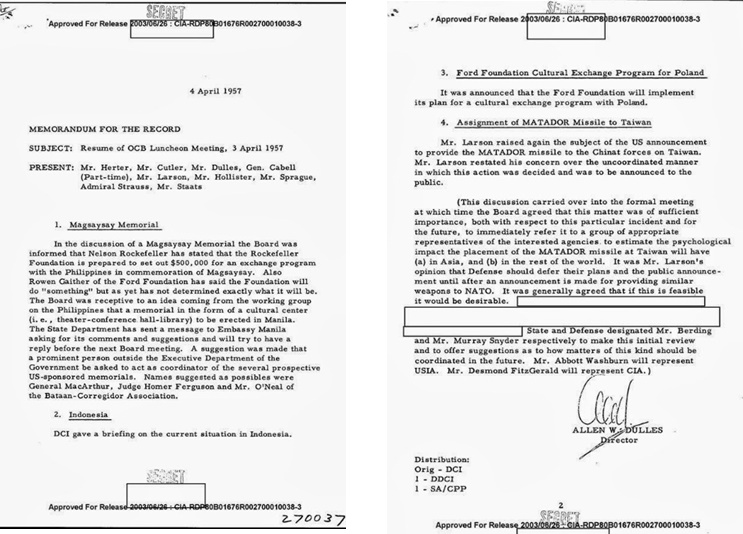
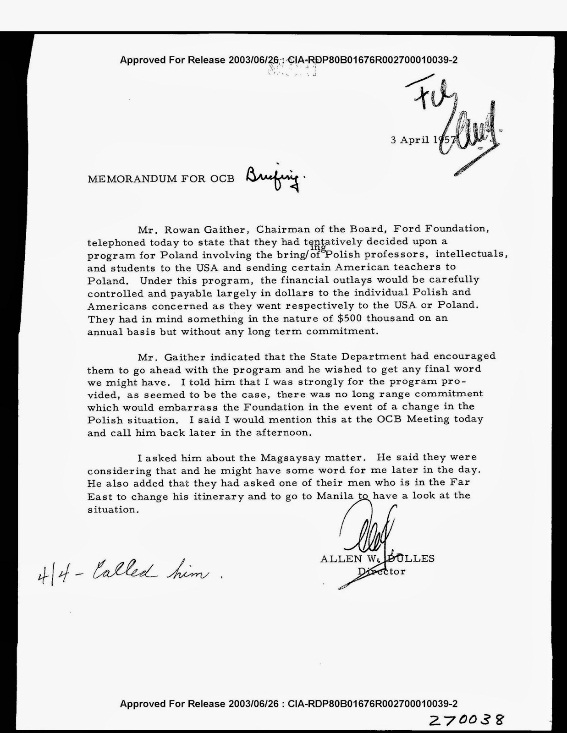
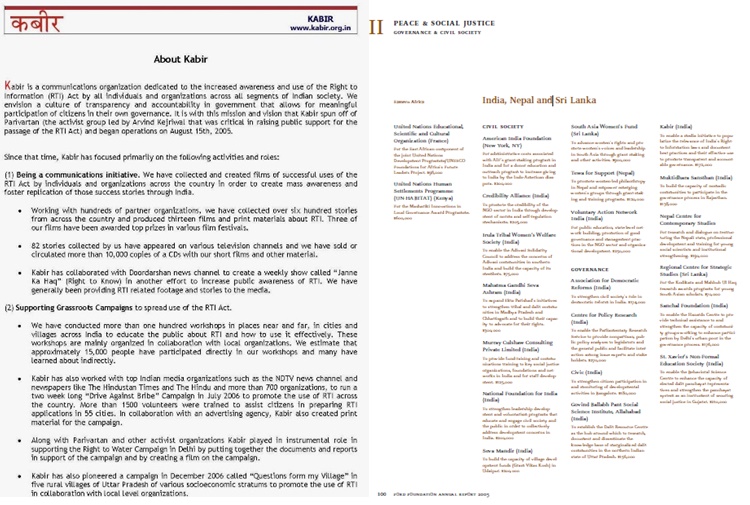
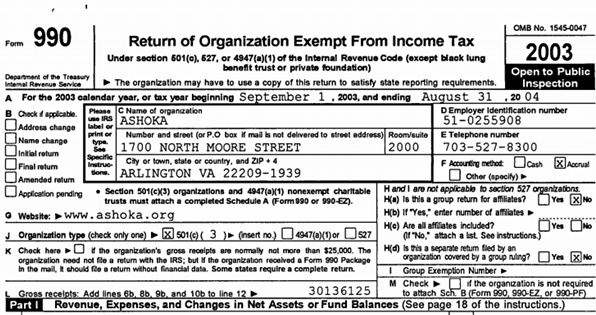
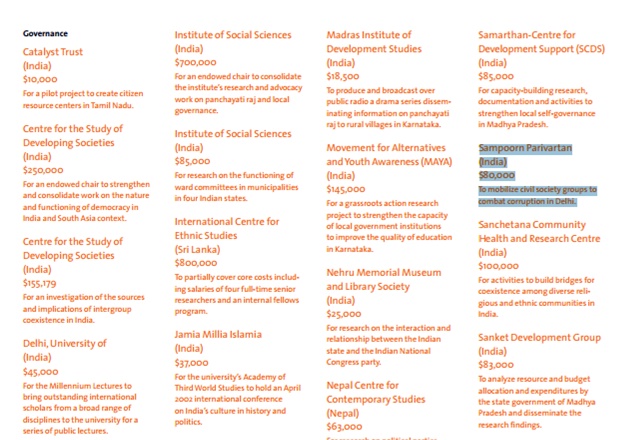
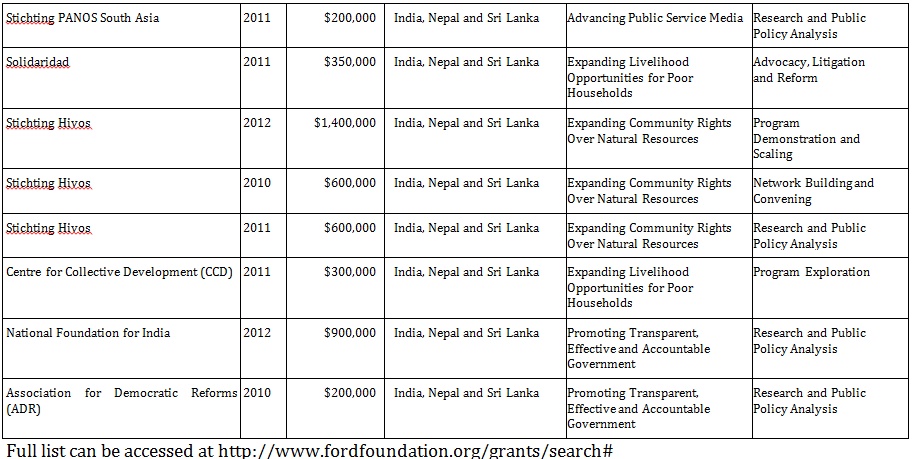
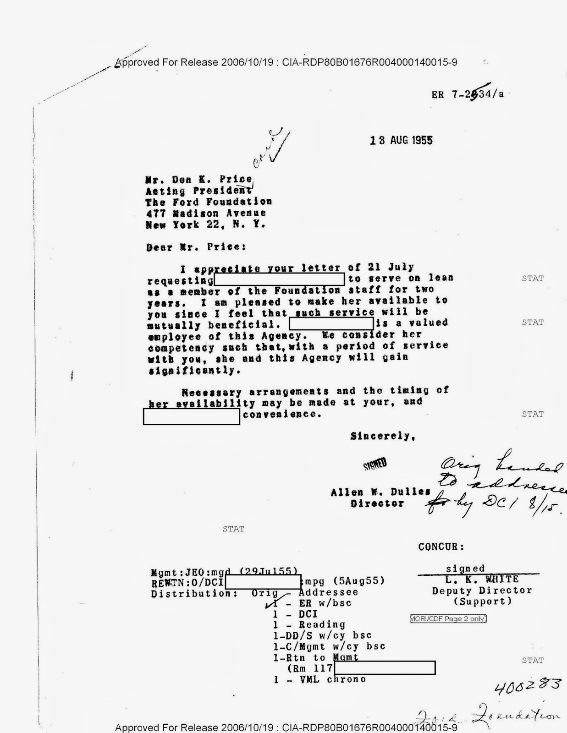




















































 Questioning Nandan Nilekani's
Questioning Nandan Nilekani's
There is no more a need for Hindu theologians than there is for Christian theologians or Muslim theologians or Jewish theologians. The purpose of a theologian is to explain God/gods and his/her/their message to the world. They are all telling us of different gods and different messages, and each contradicts the others. Every one of us is a theologian, and that is all of the theology that shy one of us needs.
It isn't knowledge, it's mythology. And every theologian is in it for one or all of the same motivations: power, money, dominion, or self assigned but always wholly imaginary specialness. Provide some actual proof that your speculations about the nature of the divine and your/our relationship to it have the slightest thing to do with reality, and then maybe we can have a conversation.